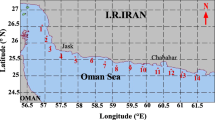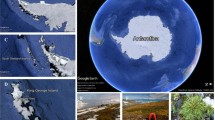Abstract
Ten actinomycete strains isolated from the Yellow Sea off China’s coasts were identified as belonging to two genera by 16S rDNA phylogenetic analysis: Streptomyces and Nocardiopsis. Six Streptomyces strains (MA10, 2SHXF01-3, MA35, MA05-2, MA05-2-1 and MA08-1) and one Nocardiopsis strain (MA03) were predicted to have the potential to produce aromatic polyketides based on the analysis of the KSα (ketoacyl-synthase) gene in the type II PKS (polyketides synthase) gene cluster. Four strains (MA03, MA01, MA10 and MA05-2) exhibited significant inhibitory effects on mycelia growth (inhibition rate >50%) and subsequent aflatoxin production (inhibition rate >75%) of the mutant aflatoxigenic Aspergillus parasiticus NFRI-95. The ethyl acetate extracts of the broth of these four strains displayed significant inhibitory effects on mycelia growth, and the IC50 values were calculated (MA03: 0.275 mg mL−1, MA01: 0.106 mg mL−1, MA10: 1.345 mg mL−1 and MA05-2: 1.362 mg mL−1). Five strains (2SHXF01-3, MA03, MA05-2, MA01 and MA08-1) were selected based on their high cytotoxic activities. The ethyl acetate extract of the Nocardiopsis strain MA03 was particularly noted for its high antitumor activity against human carcinomas of the cervix (HeLa), lung (A549), kidney (Caki-1) and liver (HepG2) (IC50: 2.890, 1.981, 3.032 and 2.603 μg mL−1, respectively). The extract also remarkably inhibited colony formation of HeLa cells at an extremely low concentration (0.5 μg mL−1). This study highlights that marine-derived actinomycetes are a huge resource of compounds for the biological control of aflatoxin contamination and the development of novel drugs for human carcinomas.
Similar content being viewed by others
References
Asolkar, R. N., Kirkland, T. N., Jensen, P. R., and Fenical, W., 2010. Arenimycin, an antibiotic effective against rifampin- and methicillin-resistant Staphylococcus aureus from the marine actinomycete Salinispora arenicola. Journal of Antibiotics (Tokyo), 63(1): 37–39.
Bérdy, J., 2005. Bioactive microbial metabolites. Journal of Antibiotics (Tokyo), 58(1): 1–26, DOI: 10.1038/ja.2005.1.
Bode, H. B., Bethe, B., Höfs, R., and Zeeck, A., 2002. Big effects from small changes: possible ways to explore nature’s chemical diversity. Chembiochem, 3(7): 619–627, DOI: 10.1002/1439-7633.
Bredholt, H., Fjaervik, E., Johnsen, G., and Zotchev, S. B., 2008. Actinomycetes from sediments in the Trondheim fjord, Norway: Diversity and biological activity. Marine Drugs, 6(1): 12–24, DOI: 10.3390/md6010012.
Bull, A. T., and Stach, J. E., 2007. Marine actinobacteria: new opportunities for natural product search and discovery. Trends in Microbiology, 15(11): 491–499, DOI: 10.1016/j.tim.2007.10.004]
Carlson, S., Marler, L., Nam, S. J., Santarsiero, B. D., Pezzuto, J. M., and Murphy, B. T., 2013. Potential chemopreventive activity of a new macrolide antibiotic from a marine-derived Micromonospora sp.. Marine Drugs, 11(4): 1152–1161, DOI: 10.3390/md11041152.
Charoensopharat, K., Thummbenjapone, P., Sirithorn, P., and Thammasirirak, S., 2008. Antibacterial substance produced by Streptomyces sp. No 87. African Journal of Biotechnology, 7(9): 1362–1368, DOI: 10.5897/AJB08.017.
Dharmaraj, S., 2010. Marine Streptomyces as a novel source of bioactive substances. World Journal of Microbiology and Biotechnology, 26(12): 2123–2139, DOI: 10.1007/s11274-010-0415-6.
El-Shatoury, S. A., El-Shenawy, N. S., and El-Salam, I. M. A., 2009. Antimicrobial, antitumor and in vivo cytotoxicity of actinomycetes inhabiting marine shellfish. World Journal of Microbiology and Biotechnology, 25(9): 1547–1555, DOI: 10.1007/s11274-009-0040-4.
Engelhardt, K., Degnes, K. F., Kemmler, M., Bredholt, H., Fjaervik, E., Klinkenberg, G., Sletta, H., Ellingsen, T. E., and Zotchev, S. B., 2010. Production of a new thiopeptide antibiotic, TP-1161, by a marine Nocardiopsis species. Applied and Environmental Microbiology, 76(15): 4969–4976, DOI: 10.1128/AEM.00741-10.
Fenical, W., and Jensen, P. R., 2006. Developing a new resource for drug discovery: marine actinomycete bacteria. Nature Chemical Biology, 2(12): 666–673, DOI: 10.1038/nchem-bio841.
Gao, X., Lu, Y., Xing, Y., Ma, Y., Lu, J., Bao, W., Wang, Y., and Xi, T., 2012. A novel anticancer and antifungus phenazine derivative from a marine actinomycete BM-17. Microbiological Research, 167(10): 616–622, DOI: 10.1016/j.micres.2012.02.008.
Hertweck, C., Luzhetskyy, A., Rebets, Y., and Bechthold, A., 2007. Type II polyketide synthases: Gaining a deeper insight into enzymatic teamwork. Natural Product Reports, 24(1): 162–190, DOI: 10.1039/B507395M.
Hesketh, A. R., Chandra, G., Shaw, A. D., Rowland, J. J., Kell, D. B., Bibb, M. J., and Chater, K. F., 2002. Primary and sec ondary metabolism, and post-translational protein modifications, as portrayed by proteomic analysis of Streptomyces coelicolor. Molecular Microbiology, 46(4): 917–932, DOI: 10.1046/j.1365-2958.2002.03219.x.
Ichikawa, N., Sasagawa, M., Yamamoto, M., Komaki, H., Yoshida, Y., Yamazaki, S., and Fujita, N., 2013. DoBISCUIT: a database of secondary metabolite biosynthetic gene clusters. Nucleic Acids Research, 41(D1): 408–414, DOI: 10.1093/nar/gks1177.
Jensen, P. R., Gontang, E., Mafnas, C., Mincer, T. J., and Fenical, W., 2005. Culturable marine actinomycete diversity from tropical Pacific Ocean sediments. Environmental Microbiology, 7(7): 1039–1048, DOI: 10.1111/j.1462-2920.2005.00785.x.
Kieser, T., Bibb, M. J., and Butner, M. J., 2000. Preparation and analysis of the genomic and plasmid DNA. In: Practical Streptomyces genetics. Norwich, England, 162–170.
Kijjoa, A., and Sawangwong, P., 2004. Drugs and cosmetics from the sea. Marine Drugs, 2(6): 73–82, DOI: 10.3390/md 8061731.
Kim, D. G., Moon, K., Kim, S. H., Park, S. H., Park, S., Lee, S. K., Oh, K. B., Shin, J., and Oh, D. C., 2012. Bahamaolides A and B, antifungal polyene polyol macrolides from the marine actinomycete Streptomyces sp.. Journal of Natural Products, 75(5): 959–967, DOI: 10.1021/np3001915.
Kurtböke, D. I., 2012. Biodiscovery from rare actinomycetes: An eco-taxonomical perspective. Applied Microbiology and Biotechnology, 93(5): 1843–1852, DOI: 10.1007/s00253-012-3898-2.
Leary, D., Vierros, M., Hamon, G., Arico, S., and Monagle, C., 2009. Marine genetic resources: a review of scientific and commercial interest. Marine Policy, 33(2): 183–194, DOI: 10.1016/j.marpol.2008.05.010.
Manivasagan, P., Venkatesan, J., Senthilkumar, K., Sivakumar, K., and Kim, S. K., 2013. Biosynthesis, antimicrobial and cytotoxic effect of silver nanoparticles using a novel Nocardiopsis sp. MBRC-1. Biomed Research International, 2013(2013): 287638, DOI: 10.1155/2013/287638.
Mayer, A. M., Rodríguez, A. D., Berlinck, R. G., and Fusetani, N., 2011. Marine pharmacology in 2007-8: Marine compounds with antibacterial, anticoagulant, antifungal, anti-inflammatory, antimalarial, antiprotozoal, antituberculosis, and antiviral activities; affecting the immune and nervous system, and other miscellaneous mechanisms of action. Comparative Biochemistry and Physiology Part C — Toxicology and Pharmacology, 153(2): 191–222, DOI: 10.1016/j.cbpc.2010.08.008.
Metsä-Ketelä, M., Salo, V., Halo, L., Hautala, A., Hakala, J., Mäntsälä, P., and Ylihonko, K., 1999. An efficient approach for screening minimal PKS genes from Streptomyces. FEMS Microbiology Letters, 180(1): 1–6, DOI: 10.1016/S0378-1097 (99) 00453-X.
Okami, Y., and Hotta, K., 1988. Search and discovery of new antibiotics. In: Actinomycetes in Biotechnology. Goodfellow, M., et al., eds. London, United Kingdom, 33–67.
Olano, C., Méndez, C., and Salas, J. A., 2009. Antitumor compounds from actinomycetes: from gene clusters to new derivatives by combinatorial biosynthesis. Natural Product Reports, 26(5): 628–660, DOI: 10.1039/b822528a.
Prudhomme, J., McDaniel, E., Ponts, N., Bertani, S., Fenical, W., Jensen, P., and Le Roch, K., 2008. Marine actinomycetes: A new source of compounds against the human malaria parasite. Plos ONE, 3(6): e2335, DOI: 10.1371/journal.pone.0002335.
Rahman, H., Austin, B., Mitchell, W. J., Morris, P. C., Jamieson, D. J., Adams, D. R., Spragg, A. M., and Schweizer, M., 2010. Novel anti-infective compounds from marine bacteria. Marine Drugs, 8(3): 498–518, DOI: 10.3390/md8030498.
Ramesh, S., and Mathivanan, N., 2009. Screening of marine actinomycetes isolated from the Bay of Bengal, India for antimicrobial activity and industrial enzymes. World Journal of Microbiology and Biotechnology, 25(12): 2103–2111, DOI: 10.1007/s11274-009-0113-4.
Schneemann, I., Nagel, K., Kajahn, I., Labes, A., Wiese, J., and Imhoff, J. F., 2010. Comprehensive investigation of marine actinobacteria associated with the sponge Halichondria panicea. Applied and Environmental Microbiology, 76(11): 3702–3714, DOI: 10.1128/AEM.00780-10.
Sheeler, N. L., MacMillan, S. V., and Nodwell, J. R., 2005. Biochemical activities of the absA two-component system of Streptomyces coelicolor. Journal of Bacteriology, 187(2): 687–696, DOI: 10.1128/JB.187.2.687-696.2005.
Sun, W., Peng, C., Zhao, Y., and Li, Z., 2012. Functional gene-guided discovery of type II polyketides from culturable actinomycetes associated with soft coral Scleronephthya sp.. PloS One, 7(8): e42847, DOI: 10.1371/journal.pone.0042 847.
Watve, M. G., Tickoo, R., Jog, M. M., and Bhole, B. D., 2001. How many antibiotics are produced by the genus Streptomyces? Archives of Microbiology, 176(5): 386–390, DOI: 10.1007/s002030100345.
Woese, C. R., Gutell, R., Gupta, R., and Noller, H. F., 1983. Detailed analysis of the higher-order structure of 16S-like ribosomal ribonucleic acids. Microbiological Reviews, 47(4): 621–669.
Yan, P. S., Shi, C. J., Hou, C. C., and Kan, G. F., 2011. Inhibition of vomitoxin-producing Fusarium graminearum by marine actinomycetes and the extracellular metabolites. Proceedings 2011 International Conference on Human Health and Biomedical Engineering (HHBE), 454–456, DOI: 10.1109/HHBE.2011.6028029.
Yan, P. S., Song, Y., Sakuno, E., Nakajima, H., Nakagawa, H., and Yabe, K., 2004. Cyclo (L-leucyl-L-prolyl) produced by Achromobacter xylosoxidans inhibits aflatoxin production by Aspergillus parasiticus. Applied and Environmental Microbiology, 70(12): 7466–7473. DOI: 10.1128/AEM.70.12.7466-7473. 2004.
Zheng, Z., Zeng, W., Huang, Y., Yang, Z., Li, J., Cai, H., and Su, W., 2000. Detection of antitumor and antimicrobial activities in marine organism associated actinomycetes isolated from the Taiwan Strait, China. FEMS Microbiology Letters, 188(1): 87–89, DOI: 10.1111/j.1574-6968.2000.tb09173.x.
Zotchev, S. B., 2012. Marine actinomycetes as an emerging resource for the drug development pipelines. Journal of Biotechnology, 158(4): 168–175, DOI: 10.1016/j.jbiotec.2011.06.002.
Author information
Authors and Affiliations
Corresponding author
Rights and permissions
About this article
Cite this article
Li, P., Yan, P. Inhibition of Aspergillus parasiticus and cancer cells by marine actinomycete strains. J. Ocean Univ. China 13, 985–994 (2014). https://doi.org/10.1007/s11802-014-2595-4
Received:
Revised:
Accepted:
Published:
Issue Date:
DOI: https://doi.org/10.1007/s11802-014-2595-4




